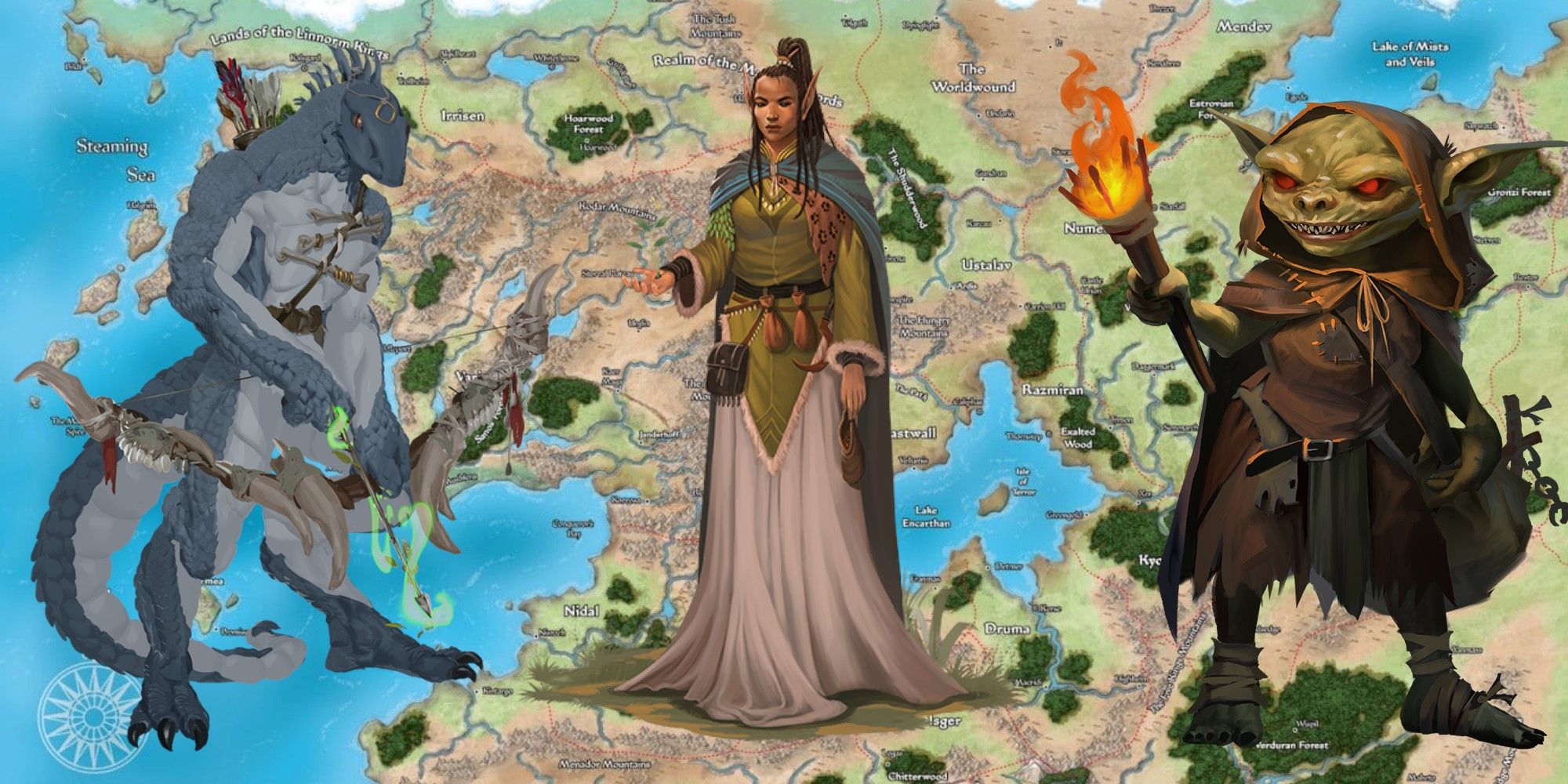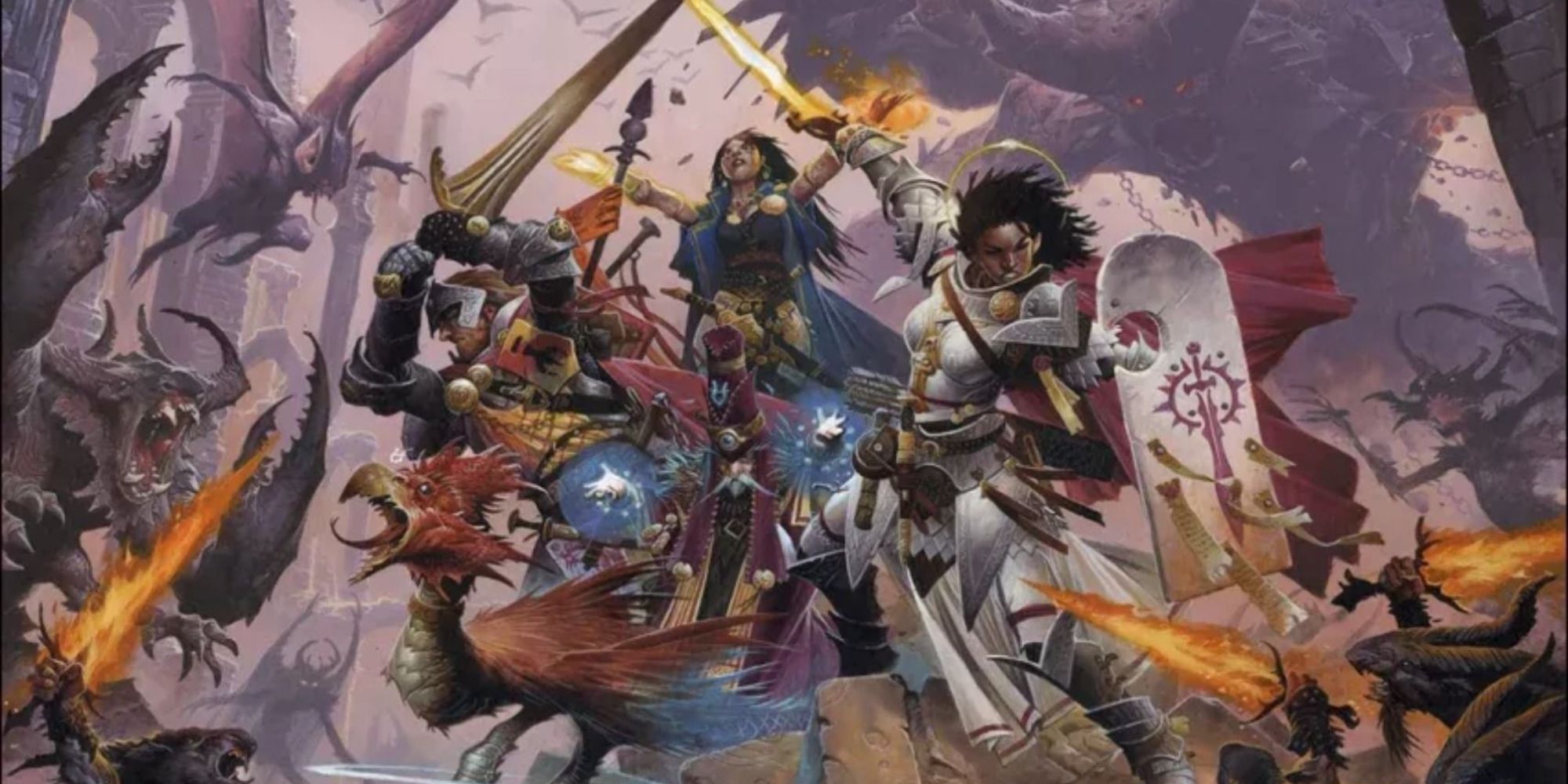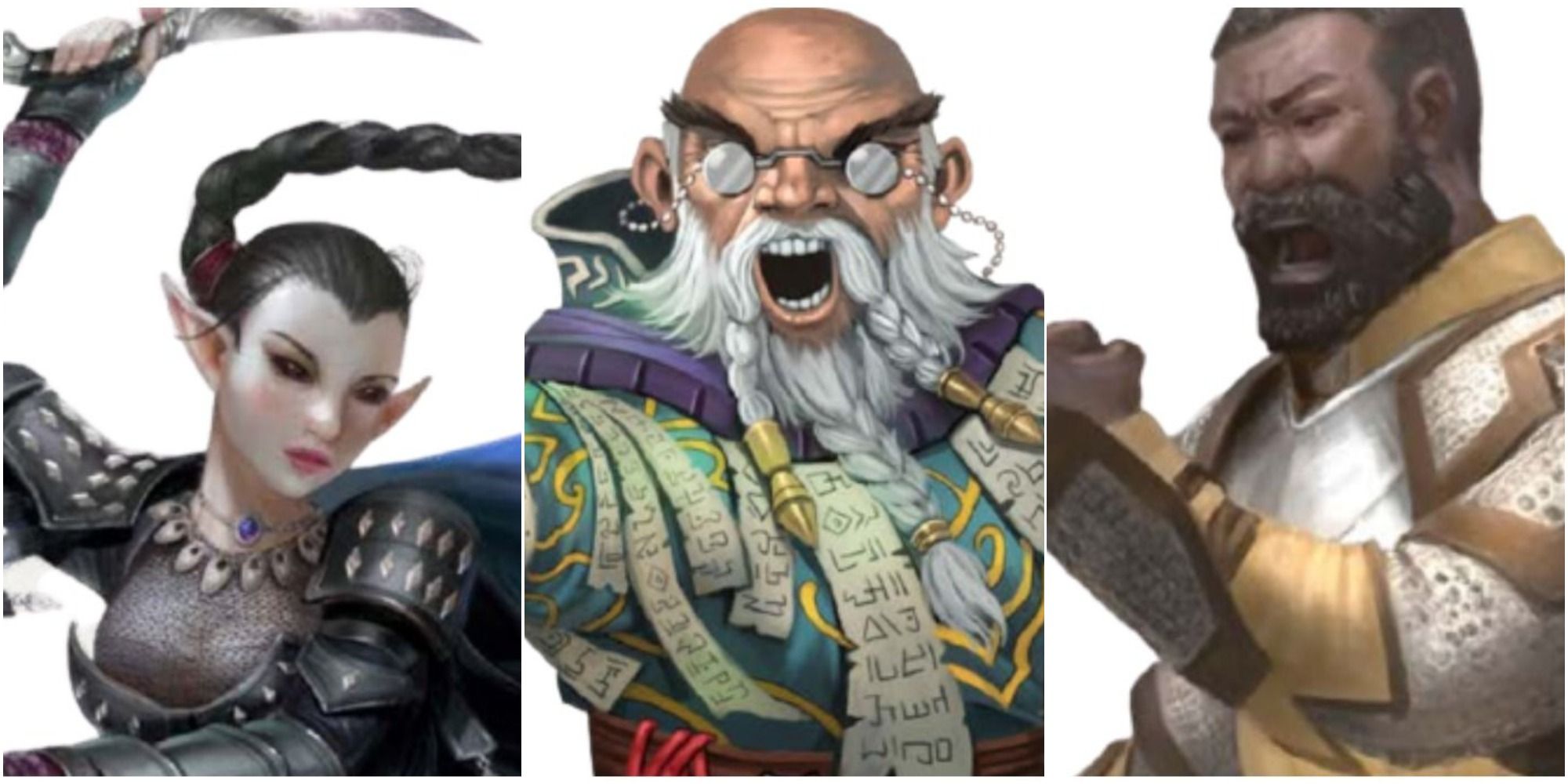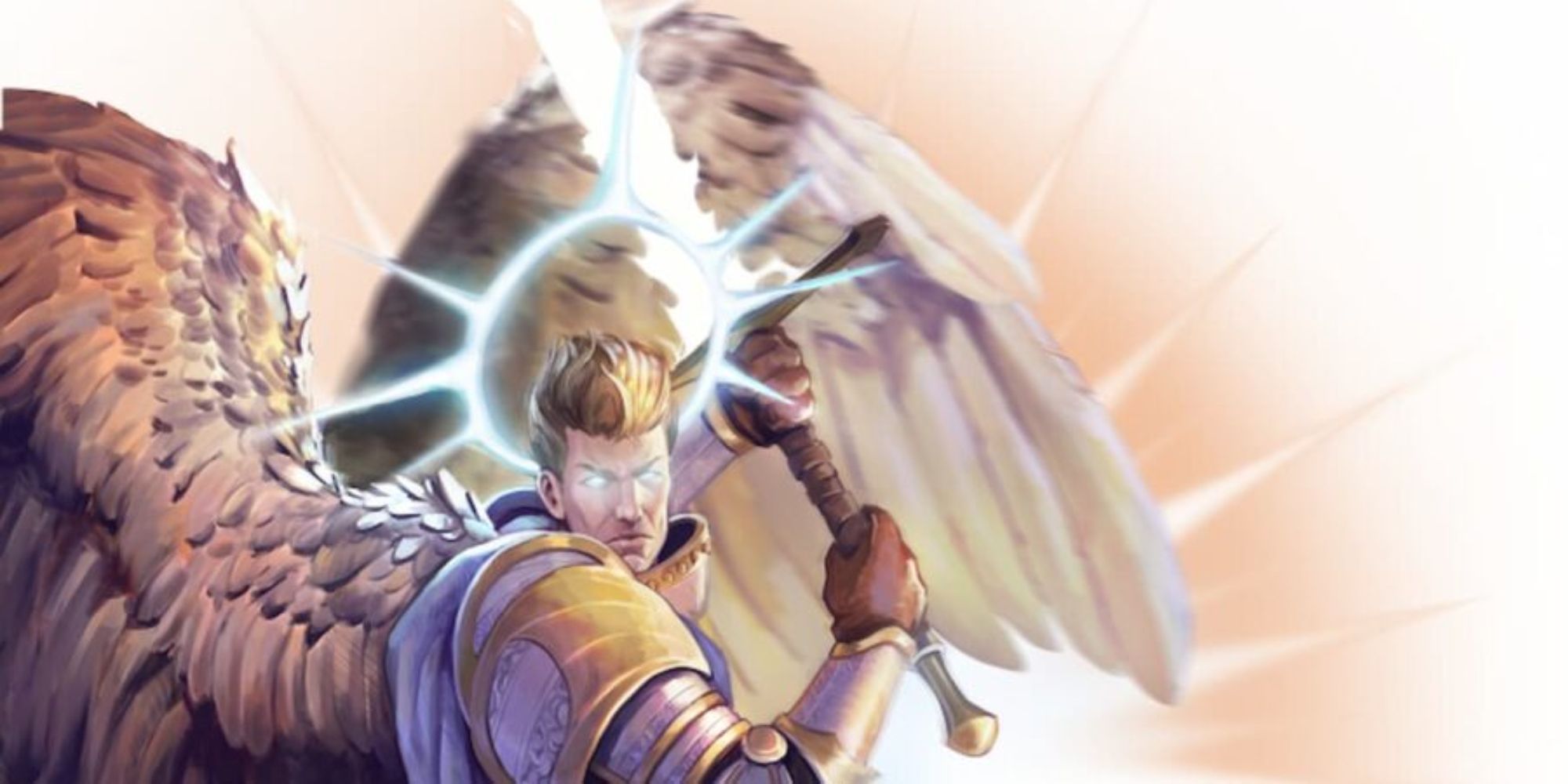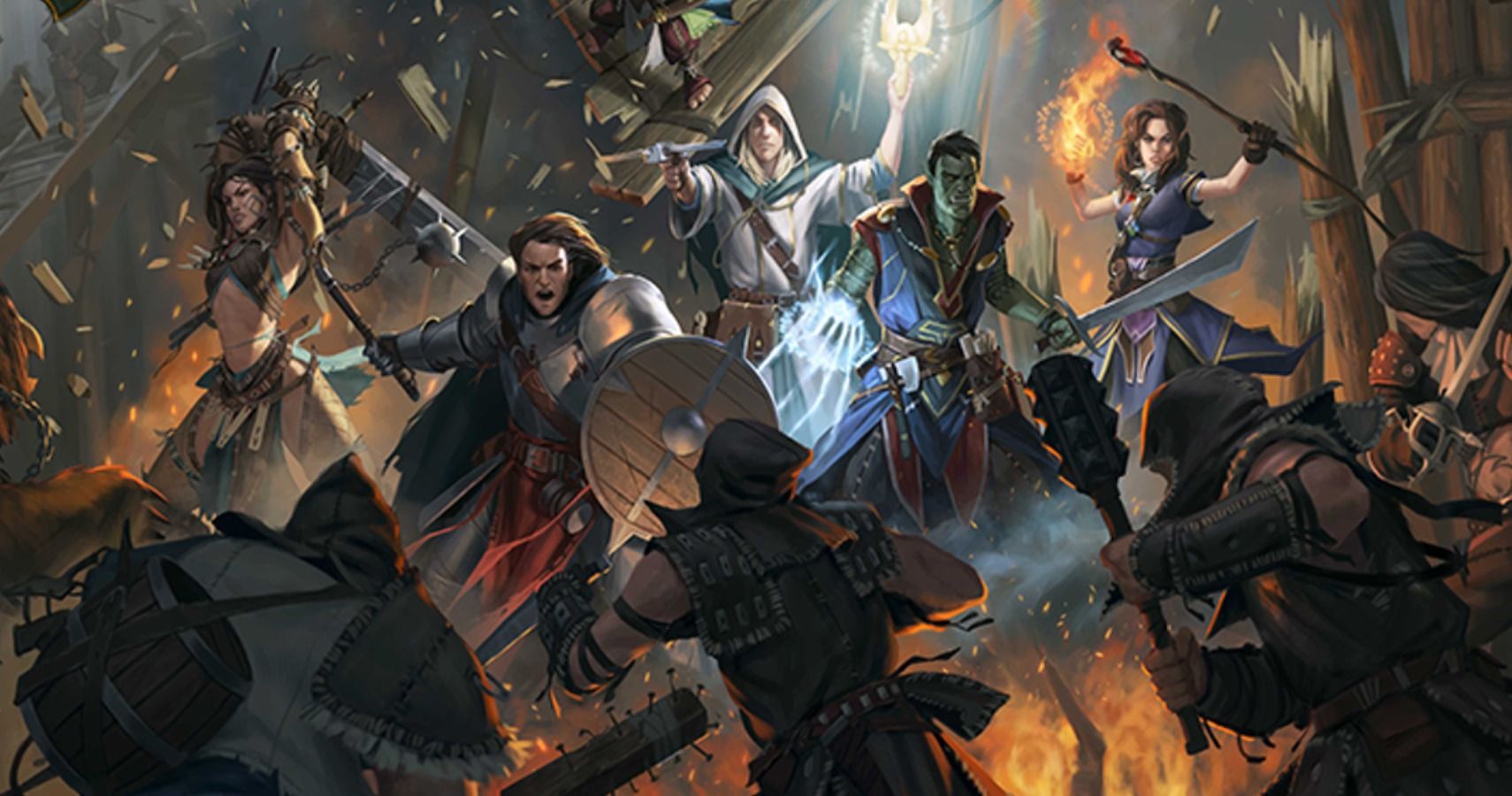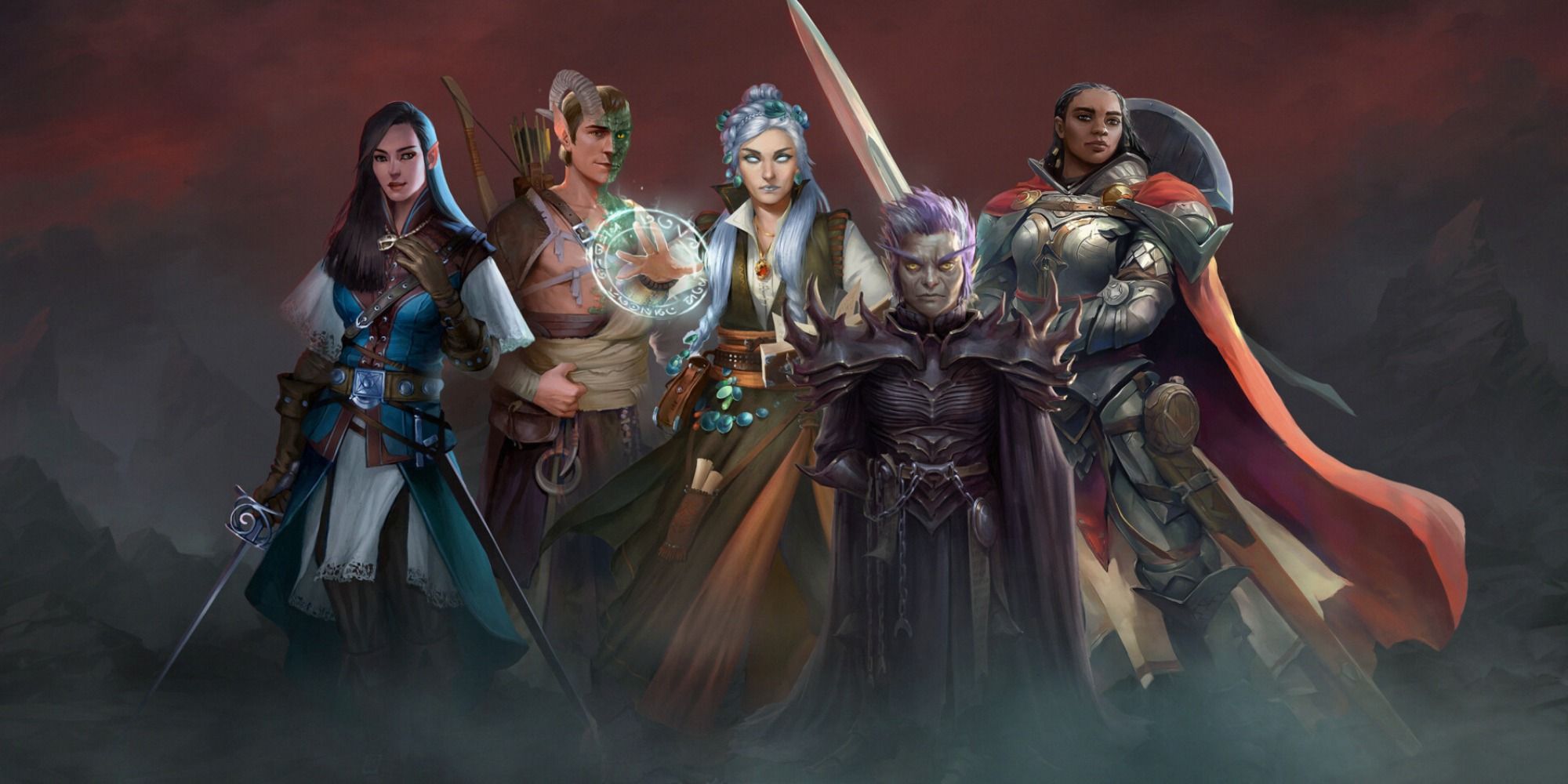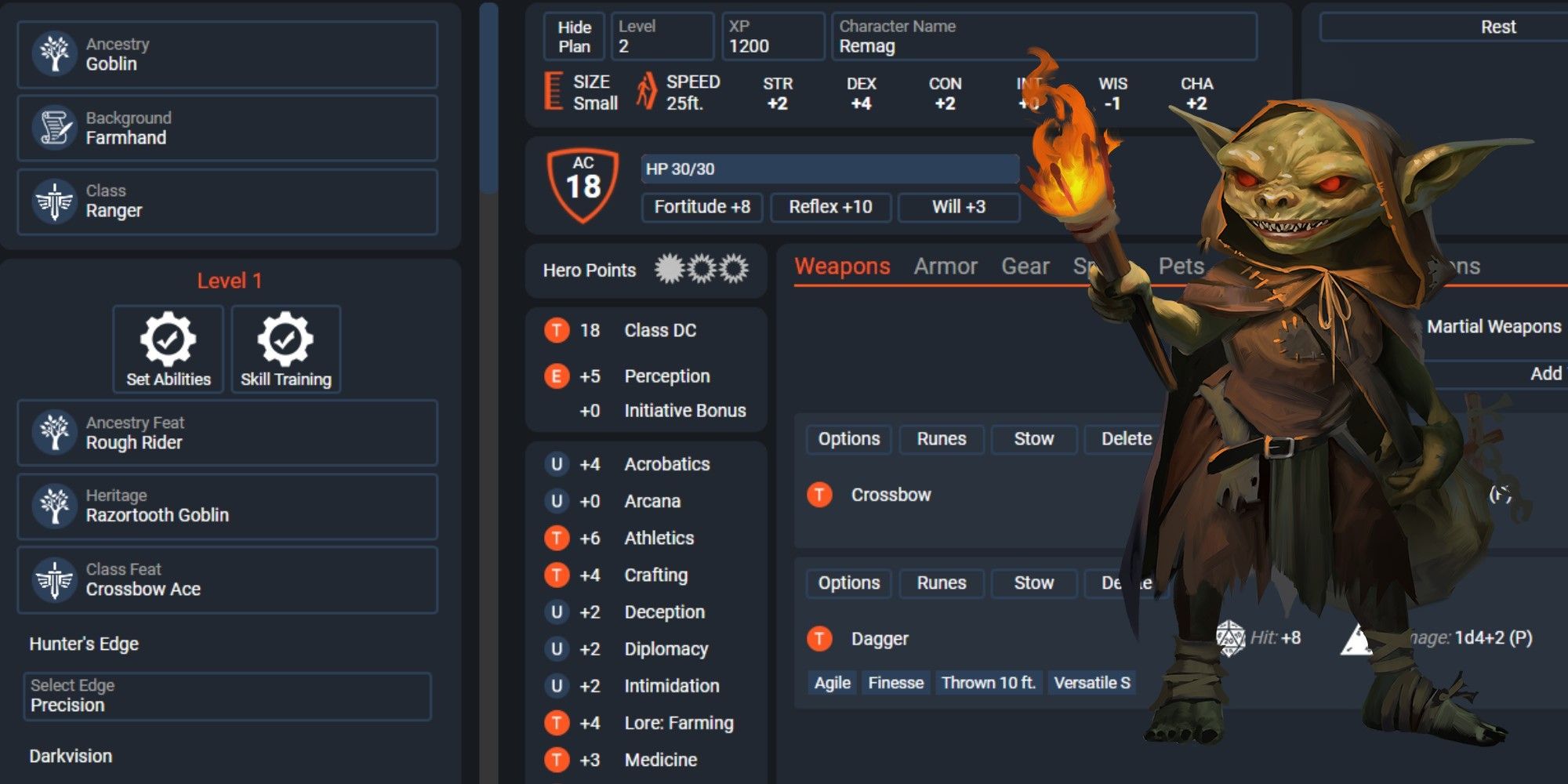Tabletop RPGs have a bit of a reputation for being quite difficult to get into, and some of this can be attributed to the relative complexity of character sheets. Not only do you have to have your creativity cores firing on all cylinders, but there are various rules to learn, dice to roll, and stats to calculate. Creating a whole character can take ages.
Thankfully, Pathfinder has streamlined the process quite brilliantly for its second edition. It's a very easy to grasp, step-by-step process that gives you a lot of control over exactly what kind of character you want to be. So let's start at the beginning.
Concept
The first thing you'll need for your character is a concept. This is a general idea for your character that could inform almost every choice you make during the character creation process. You could choose to create a young rogue who wants nothing more than to be a pirate, a princess with magical powers who wants to escape the watchful gaze of the tyrant queen, or even a delightful kobold who would be happy to spend their days tinkering in a workshop.
Once you have a concept, give your character a name.
Let's make an example character. We'll make someone named Remag who wants to be the first explorer to circumnavigate the globe.
Ancestry
Most people will be more acquainted with the term "Race" but Pathfinder opts for Ancestry instead. This is one of the most important choices when it comes to character creation and will inform much of how your character interacts with the world.
Every Ancestry has what are known as Ability Boosts and Ability Flaws. In the default method of generating a character's stats, a character will gain a +2 bonus to their Ability Boosts and a -2 Reduction to their Ability Flaws. For example, an Elf gets +2 to their Dexterity, Intelligence, and an ability score of their choosing, but will take a -2 reduction to Constitution.
For reference, this is what each ability is responsible for:
|
Strength |
Physical power, carry weight, damage with melee weapons. |
|---|---|
|
Dexterity |
Gracefulness, evasiveness, stealth, damage with ranged weapons. |
|
Constitution |
Hardiness, stamina, hit points. |
|
Intelligence |
Reasoning, skill training, some magical disciplines. |
|
Wisdom |
Common sense, intuition, perception, some magical disciplines. |
|
Charisma |
Personal magnetism, personality, persuasion, intimidation, some magical disciplines. |
Each of these stats begins at ten as a baseline and are altered by Ancestry and Class. Every character also gets four free Ability Boosts.
In addition to these stats, Ancestry also dictates a character's starting Hit Points, their size, and their speed. They can also grant extra features, such as being able to see in the dark or speak different languages.
As more books are released for Pathfinder's Second Edition, more ancestries are introduced to the world of Golarion and the system in general. The table below details every currently available Ancestry and which books they were introduced in. Free ability boosts can be used on any ability score that isn't one of their other boosts.
|
Ancestry |
Ability Boosts |
Ability Flaw |
Source |
|---|---|---|---|
|
Dwarf |
Constitution, Wisdom, free |
Charisma |
Core Rulebook |
|
Elf |
Dexterity, Intelligence, free |
Constitution |
Core Rulebook |
|
Gnome |
Constitution, Charisma, free |
Strength |
Core Rulebook |
|
Goblin |
Dexterity, Charisma, free |
Wisdom |
Core Rulebook |
|
Halfling |
Dexterity, Wisdom, free |
Strength |
Core Rulebook |
|
Human |
Two free |
None |
Core Rulebook |
|
Catfolk |
Dexterity, Charisma, free |
Wisdom |
Advanced Player's Guide |
|
Kobold |
Dexterity, Charisma, free |
Constitution |
Advanced Player's Guide |
|
Orc |
Strength, free |
None |
Advanced Player's Guide |
|
Ratfolk |
Dexterity, Intelligence, free |
Strength |
Advanced Player's Guide |
|
Tengu |
Dexterity, free |
None |
Advanced Player's Guide |
|
Android |
Dexterity, Intelligence, free |
Charisma |
Lost Omens Ancestry Guide |
|
Fetchling |
Dexterity, free |
None |
Lost Omens Ancestry Guide |
|
Fleshwarp |
Constitution, free |
None |
Lost Omens Ancestry Guide |
|
Kitsune |
Charisma, free |
None |
Lost Omens Ancestry Guide |
|
Sprite |
Dexterity, Intelligence, free |
Strength |
Lost Omens Ancestry Guide |
|
Strix |
Dexterity, free |
None |
Lost Omens Ancestry Guide |
|
Anadi |
Dexterity, Wisdom, free |
Constitution |
Lost Omens The Mwangi Expanse |
|
Conrasu |
Constitution, Wisdom, free |
Charisma |
Lost Omens The Mwangi Expanse |
|
Gnoll |
Strength, Intelligence, free |
Wisdom |
Lost Omens The Mwangi Expanse |
|
Goloma |
Wisdom, free |
None |
Lost Omens The Mwangi Expanse |
|
Grippli |
Wisdom, free |
Strength |
Lost Omens The Mwangi Expanse |
|
Shisk |
Intelligence, free |
None |
Lost Omens The Mwangi Expanse |
|
Leshy |
Constitution, Wisdom, free |
Intelligence |
Lost Omens Character Guide |
|
Hobgoblin |
Constitution, Intelligence, free |
Wisdom |
Lost Omens Character Guide |
|
Lizardfolk |
Strength, Wisdom, free |
Intelligence |
Lost Omens Character Guide |
|
Poppet |
Constitution, Charisma, free |
Dexterity |
Lost Omens Grand Bazaar |
|
Automaton |
Strength, free |
None |
Guns & Gears |
|
Shoony |
Dexterity, Charisma, free |
Constitution |
Extinction Curse |
|
Azarketi |
Constitution, Charisma, free |
Wisdom |
A character's ancestry doesn't only dictate various stats, but what Ancestry Feats they can take. These are features gained over the course of their life as they level up, and are often attuned closely with the ancestry's features. Ancestry Feats are gained at levels one, five, nine, 13, and 17.
For example, the doglike Shoonies can take the Dig Quickly feat to utilize their paws as effectively as shovels, Elves might take Wildborn Magic which evokes an elven attunement to magical places. As a result, you can more finely tune your character's appearance and abilities as a member of their Ancestry.
Let's go with the Goblin ancestry for Remag. Thanks to this, he will have Ability Boosts in Dexterity and Charisma, and we'll choose Strength for his free boost since he'll have to carry a lot of things while traveling. He gets an automatic Ability Flaw in Wisdom. As he is level one he gets an Ancestry Feat - he chooses Rough Rider which makes him better at riding traditional Goblin mounts such as goblin dogs.
Heritage
Heritage is also dictated by Ancestry. This is another choice that reflects the knowledge and abilities passed down from your character's ancestors. They are a mixture of biological and environmental traits that manifest as mechanical changes to that character's abilities in-game.
Every character has a Heritage, and every Ancestry can choose from a number of different Heritages. To take Dwarves as an example, they could be Anvil Dwarves with an affinity for crafting, Forge Dwarves who have a natural adaptation to heat, Rock Dwarves who are far better at resisting attempts to knock them down or trip them over, or a number of other Heritages - you get the picture.
Some Ancestry Feats are locked behind certain Heritages.
This is yet another way that you can customize your character and help round out their background.
Let's return to Remag again - we'll make him a Razortooth Goblin, which means that he has very long teeth with which he can make a quick piercing attack, biting enemies in battle.
Versatile Heritages
While it would be recommended to take a normal Heritage for first-time players, there are what's known as Versatile Heritages available. These represent ancestral intermingling of bloodlines and manifest as certain physiological changes depending on the specific Heritage.
The most prominent examples of these would be Half-Orcs and Half-Elves, but there are plenty of others. For example, a character whose mother fell in love with an angel could be the result of their union, giving them the Aasimar Heritage. This replaces their usual Heritage and unlocks Aasimar-specific Ancestry Feats available for use upon leveling up.
Background
A character's background is rather what it sounds like. This choice dictates a character's past in a very general sense and gives them some mechanical benefits as a result. Backgrounds come with Ability Boosts, skill training, and potentially a feat that relates to the background.
There is a huge range of Backgrounds published in the various books from Paizo, so there should always be something you can find for your character to relate to.
Back to Remag. While perusing the various options, we find the Farmhand Background and decide that it suits him quite well. As a result, we get two Ability Boosts, one of which must be either Constitution or Wisdom. We choose Constitution and use the other one to boost our Dexterity even further. The Farmhand Background also means that Remag is trained in the Athletics and the Farming Lore skill, and we have the Assurance skill feat.
Class
Class is possible the biggest feature that can affect your character and how they interact with the world. It informs what they are good at, what equipment they can use, how they behave in battle, and what abilities they will gain as they level up.
It's a good idea to go over what each class is good at before choosing one. Think about what your character's past might lead them to be, think about what you'd like to do as a player, and maybe even think about how your character will fit into your party.
Picking a class is the biggest alteration to a character sheet - you will have to note the following:
- Their Perception proficiency.
- Their Saving Throws proficiencies.
- Their Skill proficiencies.
- Which weapons they are proficient in using.
- Which armors they are proficient in wearing.
- Their Class DC.
All classes also grant an Ability Boost, a number of hit points, and a few features that are gained at level one, so it's important to read through the class features and note what they are and how to use them.
The following table lists every class currently published by Paizo and their sources.
|
Class |
Description |
Source |
|---|---|---|
|
Alchemist |
A crafter who can make potions, tinctures, and even bombs for themselves and their allies. |
Core Rulebook |
|
Barbarian |
A warrior who taps into some source of rage to obtain great power. |
Core Rulebook |
|
Bard |
A spellcaster who channels magic through Charisma and special performances. |
Core Rulebook |
|
Champion |
A warrior with a great connection to a cause, whether good or evil. |
Core Rulebook |
|
Cleric |
A spellcaster with a spiritual link to some sort of deity. |
Core Rulebook |
|
Druid |
A spellcaster with a primal connection to nature. |
Core Rulebook |
|
Fighter |
A warrior trained in various types of combat. |
Core Rulebook |
|
Monk |
A martial artist who trains towards perfection and uses Ki to cast magic. |
Core Rulebook |
|
Ranger |
A warrior with incredible survival skills who can track foes better than any other. |
Core Rulebook |
|
Rogue |
A shifty combatant who can perform sneak attacks and excels with stealth. |
Core Rulebook |
|
Sorcerer |
A spellcaster who channels magic through their enchanted bloodline. |
Core Rulebook |
|
Wizard |
A spellcaster who studied for many years to obtain their knowledge of magic. |
Core Rulebook |
|
Investigator |
A detective type with a knack for figuring things out and can use their knowledge in battle. |
Advanced Player's Guide |
|
Oracle |
A cursed/blessed spellcaster with divine powers granted through knowledge of life's mysteries. |
Advanced Player's Guide |
|
Swashbuckler |
A warrior filled with panache and style. |
Advanced Player's Guide |
|
Witch |
A spellcaster with a magical familiar who derives power from a mysterious patron. |
Advanced Player's Guide |
|
Magus |
A hybrid warrior who combines martial might with magical powers. |
Secrets of Magic |
|
Summoner |
A mysterious warrior who lives and fights alongside an Eidolon. |
Secrets of Magic |
|
Gunslinger |
An expert in guns or crossbows with a knack for ranged combat. |
Guns & Gears |
|
Inventor |
A tinkerer who can create contraptions and machines to serve them in life and in battle. |
Guns & Gears |
Let's use the Ranger class for Remag - it's a class based on survival, traversing the wilderness, and an association with nature. Along with all of the Ranger's class proficiencies, Remag gains the ability to Hunt Prey, allowing him to get a circumstantial bonus when tracking a creature of his choice.
He also gets his first Class Feat, which he uses to get Crossbow Ace - this will make him better at using crossbows in battle. In addition, he gets the Hunter's Edge class feature which lets Remag specialize into a certain type of combat when using Hunt Prey. We choose Precision out of the three options to make his crossbow skills even stronger.
Leveling Up
Leveling up in Pathfinder's second edition is quite simple as every class follows the same general outline. For example, reaching level two is always accompanied by a new Class Feat and a Skill Feat. Getting to level three always comes with a Skill Increase and a General Feat, and so on.
The ways that classes differ is in what extra features the characters get automatically - the options that require no player choice. For example, Rangers will acquire the Iron Will feature at level three which makes them better at Will saves, while Inventors become experts in Crafting through the Expert Overdrive feature instead.
Always make sure you understand every new feature that you gain upon leveling up in the class of your choosing. Each class comes with a handy table at the beginning of their section in the various sourcebooks that you can use to keep track of things if needed.
It is quite easy to simplify the entire process of character creation and leveling up using a character manager such as Pathbuilder. These apps make everything much easier and make sure that you don't miss anything - but it's also a good idea to fill out a character sheet yourself a few times so that you understand where everything comes from.

